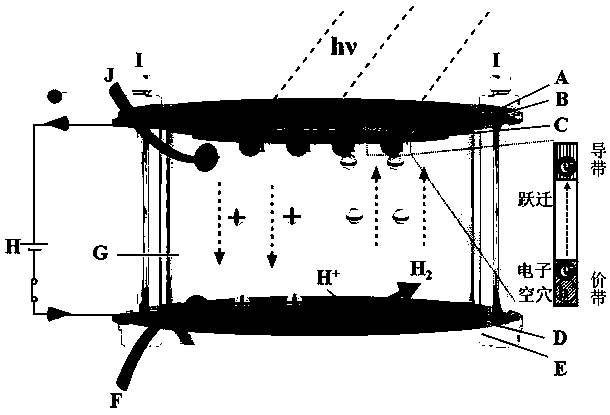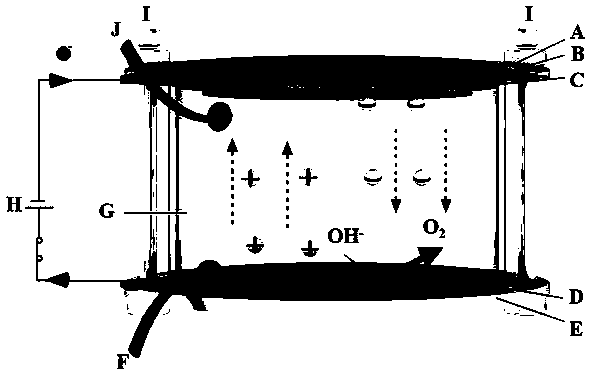Photoassisted electrically controlled ion exchange process and method for treating negative ions in low-concentration wastewater
An ion exchange and anion technology, applied in the field of wastewater treatment, can solve the problems of high recombination rate of photogenerated electrons and holes, low photocatalytic degradation efficiency and low output power, so as to improve the utilization of light energy, increase yield and reduce electric energy the effect of consumption
- Summary
- Abstract
- Description
- Claims
- Application Information
AI Technical Summary
Problems solved by technology
Method used
Image
Examples
Embodiment Construction
[0024] The present invention is further illustrated by the following examples, but not limited to the following examples.
[0025] The light-assisted and electronically controlled ion exchange process provided by the present invention utilizes electric energy and light energy efficiently, solves the problem of simply relying on electric energy to drive the separation of ions in the "electrically controlled ion exchange" technology, and reduces the consumption of electric energy; at the same time, through the external circuit The timely export of photogenerated electrons reduces the recombination of electron-hole pairs, increases the photon quantum yield and the number of surface holes, and improves the utilization rate of light energy. as attachedfigure 1 As shown, during the adsorption, waste water is injected into the electrolytic cell, the quartz light window is opened, the photoelectric functional membrane material electrode is illuminated, and then the external circuit is ...
PUM
 Login to View More
Login to View More Abstract
Description
Claims
Application Information
 Login to View More
Login to View More - R&D
- Intellectual Property
- Life Sciences
- Materials
- Tech Scout
- Unparalleled Data Quality
- Higher Quality Content
- 60% Fewer Hallucinations
Browse by: Latest US Patents, China's latest patents, Technical Efficacy Thesaurus, Application Domain, Technology Topic, Popular Technical Reports.
© 2025 PatSnap. All rights reserved.Legal|Privacy policy|Modern Slavery Act Transparency Statement|Sitemap|About US| Contact US: help@patsnap.com


